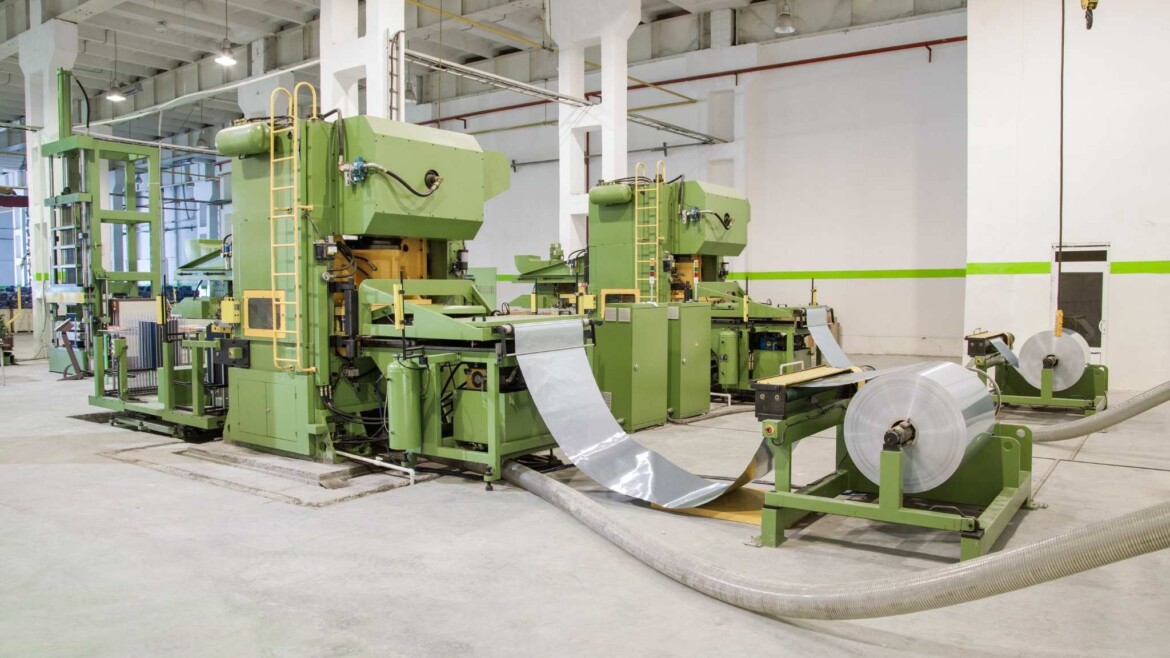What Are Cut-to-Length Lines?
Cut-to-length lines are industrial machine and equipment systems used to cut metal sheets, which are in coil form, into specific lengths. These lines are widely used in various metal processing facilities, especially in steel service centers and sheet metal processing plants. Cut-to-length lines provide high precision and efficiency, helping to speed up production processes and maintain quality standards.
Operation of Cut-to-Length Lines
- Coil Feeding: At the beginning of the cut-to-length line, the metal sheet in coil form is placed into the machine. These sheets are typically made of various metals, such as steel, aluminum, or copper.
- Flattening: The sheet is passed through a leveling unit to remove any bends or deformations. This step ensures that the metal is completely flat before cutting.
- Cutting: The leveled sheet is directed to the cutting blades to be cut into specific lengths. These blades work with precise adjustments to cut the metal sheet to the desired length.
- Transportation and Stacking: The cut pieces are collected and stacked through transportation systems. The stacking process ensures that the material is stored properly and prepared for subsequent operations.
Applications of Cut-to-Length Lines
Cut-to-length lines have a wide range of applications and are widely used in various industries:
- Automotive Industry: In the production of automobile parts and components.
- Home Appliance Manufacturing: For cutting the bodies and other metal parts of appliances like refrigerators and washing machines.
- Construction Sector: In the production of steel structural elements.
- Electrical and Electronics Industry: In the production of electrical panels, cabinets, and other metal enclosures.
- Furniture Manufacturing: For cutting metal furniture parts.
Advantages of Cut-to-Length Lines
- Precise Cutting: Provides high precision cutting, resulting in products with the desired dimensions and quality.
- High Efficiency: Increases production speed through automatic feeding and cutting processes.
- Versatile Material Processing: Allows processing of metal sheets of various types and thicknesses.
- Reduced Labor: Automation reduces the need for manual labor and minimizes the risk of operator errors.
- Cost Savings: Provides cost savings through reduced waste and faster production.
Components of Cut-to-Length Lines
Cut-to-length lines consist of various components:
- Coil Loading Car: Loads the metal sheet coil into the cut-to-length line.
- Leveling Unit: Ensures the sheet is leveled.
- Cutting Unit: Cuts the metal sheet into the desired lengths.
- Transportation Systems: Carries and stacks the cut pieces.
- Control Panel: The electronic system that controls and adjusts all operations of the line.
Cut-to-length lines are an indispensable part of modern industrial production processes. By providing high efficiency and precision, they optimize production processes and help in obtaining high-quality products.
Alcos Cold Cut-to-Length and Slitting Line
| Parameter |
Specification |
| Minimum – Maximum Thickness |
0.20 mm – 2.00 mm |
| Maximum Width |
1650 mm |
| Maximum Coil Weight |
35 tons |
Uçar Hot Cut-to-Length Line
| Parameter |
Specification |
| Minimum – Maximum Thickness |
0.27 mm – 2.50 mm |
| Maximum Width |
2050 mm |
| Maximum Coil Weight |
35 tons |
4-18 Hot Cut-to-Length Line
| Parameter |
Specification |
| Minimum – Maximum Thickness |
4 mm – 18 mm |
| Maximum Width |
1600 mm |
| Maximum Coil Weight |
40 tons |
10-60 Hot Cut-to-Length Line
| Parameter |
Specification |
| Minimum – Maximum Thickness |
10 mm – 60 mm |
| Maximum Width |
1600 mm |
| Maximum Coil Weight |
30 tons |
Staps Cold Cut-to-Length Line
| Parameter |
Specification |
| Minimum – Maximum Thickness |
0.30 mm – 2.00 mm |
| Maximum Width |
1600 mm |
| Maximum Coil Weight |
10 tons |



